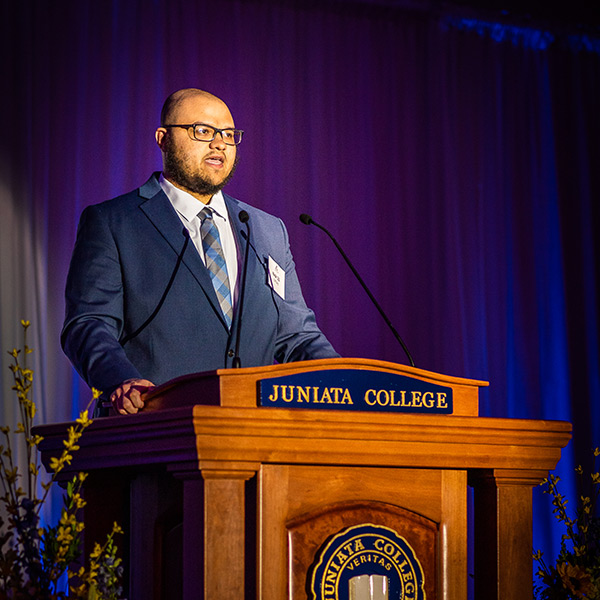
History students benefit from our local and national proximity to historical societies,
courthouses, and museums. Huntingdon, where Juniata College is located, is the county
seat and offers a wealth of research opportunities for genealogical research and public
history. Gettysburg and Antietam, two historic battlefields, are two hours away.
Juniata history graduates attend graduate school to pursue master’s and doctoral degrees in history. They also pursue lively careers in the field at a wide variety of organizations including the National Park Service and various museums.
100% of Juniata's history and art history faculty have earned Ph.D.s, and they serve, first and foremost, as professors.

History students benefit from our local and national proximity to historical societies,
courthouses, and museums. Huntingdon, where Juniata College is located, is the county
seat and offers a wealth of research opportunities for genealogical research and public
history. Gettysburg and Antietam, two historic battlefields, are two hours away.
Juniata history graduates attend graduate school to pursue master’s and doctoral degrees in history. They also pursue lively careers in the field at a wide variety of organizations including the National Park Service and various museums.
100% of Juniata's history and art history faculty have earned Ph.D.s, and they serve, first and foremost, as professors.

History students benefit from our local and national proximity to historical societies,
courthouses, and museums. Huntingdon, where Juniata College is located, is the county
seat and offers a wealth of research opportunities for genealogical research and public
history. Gettysburg and Antietam, two historic battlefields, are two hours away.
Juniata history graduates attend graduate school to pursue master’s and doctoral degrees in history. They also pursue lively careers in the field at a wide variety of organizations including the National Park Service and various museums.
100% of Juniata's history and art history faculty have earned Ph.D.s, and they serve, first and foremost, as professors.
-

Exceptional Faculty
Learn From the Best
Five Juniata history and art history professors have received the Gibbel award for Distinguished Teaching, two have received the Beachley Award for Distinguished Teaching. One was named Pennsylvania Professor of the Year.
-

Strong Community
We Support Each Other on Our Journeys
Take part in campus communtiy traditions, such as fall cookout, senior roast, excursions to the swamp, and hall golf. History students and faculty form close relationships, attending dinner parties together, even being invited to one another's weddings.
-

Professional Preparation
Dig In for Success
Students and alumni have interned on campus, at local historical societies and courthouses, at museums such as the Smithsonian Institution, and with the National Park Service at sites such as Glacier National Park, Shenandoah National Park, and Lincoln Home National Historical Site.
Study Abroad
Enrich your understanding of other cultures and their histories. Juniata has programs on every continent except Antarctica. In recent years, history students have studied abroad at Leeds University, St. Johns University, and Lincoln University in the United Kingdom, Cork University in the Republic of Ireland, Glasgow University in Scotland, and Otago University in New Zealand. They have also interned in France, studied abroad in China, taken short-term study abroad courses to Rwanda, Japan, and China. Learn more here.
Local and National Proximity
• New York City - 5 hours
• Philadelphia, Pa. - 4 hours
• Washington, D.C. - 3 hours
• Pittsburgh, Pa. - 2.5 hours

Local and National Proximity
• New York City - 5 hours
• Philadelphia, Pa. - 4 hours
• Washington, D.C. - 3 hours
• Pittsburgh, Pa. - 2.5 hours

Local and National Proximity
• New York City - 5 hours
• Philadelphia, Pa. - 4 hours
• Washington, D.C. - 3 hours
• Pittsburgh, Pa. - 2.5 hours

Local and National Proximity
• New York City - 5 hours
• Philadelphia, Pa. - 4 hours
• Washington, D.C. - 3 hours
• Pittsburgh, Pa. - 2.5 hours


Research Experience

Research Experience

Research Experience

 skip to content
skip to content








